You spot a crack in your windshield and wonder, “When are windshield cracks dangerous?” A cracked windshield weakens your car’s safety features and puts you at risk during crashes.
This guide shows you three major warning signs that tell you when to fix or replace your auto glass right away. Your safety depends on knowing these crucial signs.
Key Takeaways
Windshield cracks in your line of sight need fixing right away. They create dangerous blind spots and glares that block your view of the road.
Your windshield provides 40% of your car’s roof strength. Even small cracks weaken this support and make rollover crashes more dangerous.
Temperature changes cause quick crack growth. Cracks spread 60% faster at 32°F and get worse in both hot and cold weather.
Small chips under an inch wide can often get fixed. But long cracks over 6 inches usually need a full windshield replacement.
Daily driving makes cracks worse through constant vibration. Rough roads, potholes, and speed bumps can turn small chips into major cracks within days.
Table of Contents
Types of Windshield Cracks
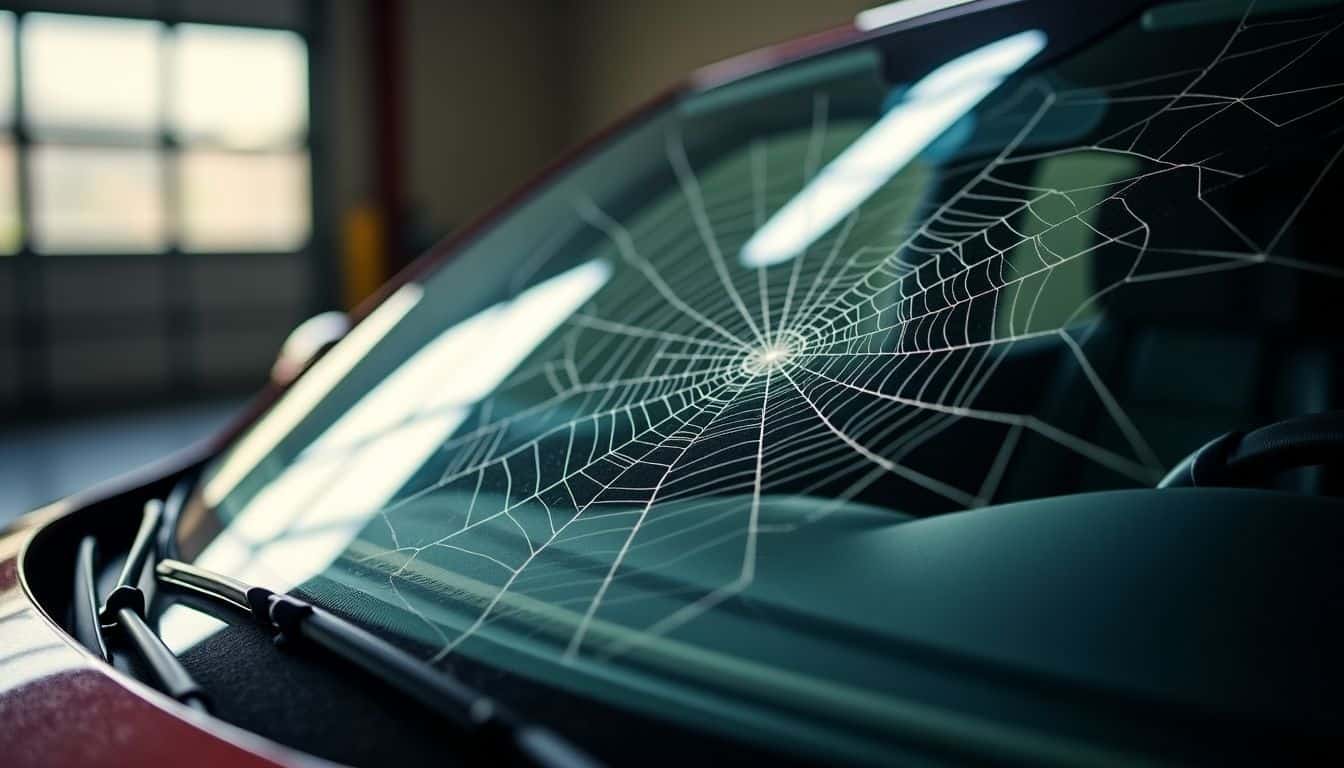
Windshield cracks come in different shapes and sizes, each posing unique risks to your safety. A crack can start small but grow into a major problem that affects your car’s structural integrity and your visibility on the road.
Small Chips

Small chips on your car glass start from debris hits on the road. These tiny marks might look harmless, but they need quick action. Most chips under an inch wide can get a simple fix at an auto body shop.
The repair process fills these small spots before they grow into bigger problems.
A bullseye chip shows up as a clear circle mark on your windshield from rock impacts. Star chips create tiny cracks that spread out like rays from the center point. Both types affect your car’s value and safety features like adaptive cruise control.
I learned this the hard way after ignoring a small chip that turned into a crack during a summer heat wave. Quick repairs at the first sign of damage will save you money and keep your car safe.
Long Cracks

Unlike small chips that form tiny spots, long cracks create serious problems for your windshield. These cracks stretch more than 6 inches across your auto glass and pose major risks to driver safety.
The glass loses its strength with each passing mile, making your car less safe during a rollover or collision.
Most long cracks start from sudden temperature shifts or bad weather. The laminated glass weakens as the crack grows bigger from road vibrations and daily driving. Your windshield helps your airbags work right during crashes, but a long crack ruins this protection.
The damaged area needs fast attention, since repairs rarely fix long cracks well. Your best choice is getting a full windshield replacement to keep your car safe on the road. I learned this lesson after ignoring a crack in my own windshield – it spread across the entire glass in just two weeks of normal driving.
Star Breaks
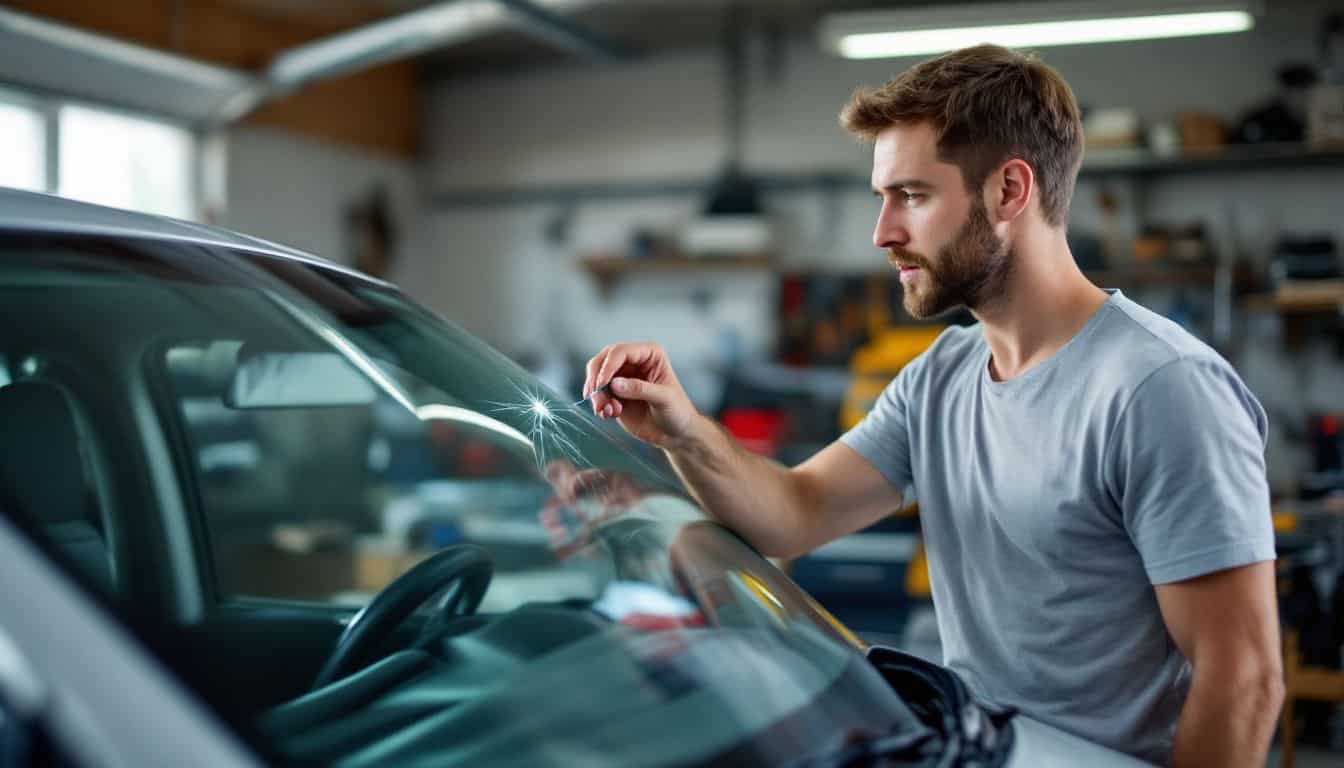
Star breaks create distinct damage patterns on your windshield that look like a starburst. Unlike a car dent, these breaks form a radial pattern from the impact point where small rocks or pebbles hit the auto glass.
Your windshield’s laminated glass helps contain these breaks, making them less likely to spread across the surface.
The good news is that star breaks are among the most repair-friendly windshield damages you’ll encounter.
Most star breaks stay small and don’t grow larger over time. Auto glass repair shops can fix these damages quickly before they affect your car’s safety systems. The repair process keeps your windshield strong and maintains its role in airbag deployment.
Your vehicle’s lane departure warnings also work better with a properly fixed windshield.
When Windshield Cracks Become Dangerous

A cracked windshield puts you at risk during crashes because it weakens your car’s safety features. Your damaged windshield can’t protect you from flying debris, and it might not work right with your airbags during an accident.
Obstructed Vision
Damaged windshields create dangerous blind spots that block your view of the road. Small chips or cracks in your line of sight limit what you can see while driving. Bright sunlight hits these cracks and creates blinding glares that make safe driving nearly impossible.
Police officers can stop and ticket you for driving with cracked auto glass in your field of vision.
Your windshield plays a vital role in keeping you safe on the road. Cracks directly in front of the driver require immediate repairs, no matter their size. The damaged laminated glass distorts your view of other cars, pedestrians, and road hazards.
Clear visibility through your windscreen helps prevent car accidents and keeps you from getting traffic tickets.
Compromised Structural Integrity

Poor visibility leads straight to safety risks, but the dangers go deeper into your car’s structure. Your windshield acts as a major support beam for your car’s frame. Modern windscreens provide 40% of your vehicle’s roof strength through their tough laminated glasses design.
A solid windshield keeps you safe during crashes by stopping the roof from caving in. The glass works with your car’s frame to create a protective cage around you.
A windshield isn’t just glass – it’s your first line of defense in a crash.
The strength of your windshield matters most in rollover crashes and windshield replacement becomes crucial with any damage.
Your airbags need a strong windshield to work right during deployment. Tiny cracks can spread fast from road bumps and temperature changes. The glass might look okay from the outside, but even small damage cuts down its ability to protect you.
Your car’s tires grip the road, while your windshield guards you from above.
Risk of Shattering

A cracked windshield poses serious dangers during car crashes and rough road conditions. The glass can break into sharp pieces without warning, putting you and your passengers at risk.
Damaged windshields lose their ability to work with airbags during accidents, making crashes more dangerous.
Tiny cracks create weak spots that spread faster than you might expect. Your windshield takes constant stress from road bumps, temperature changes, and normal driving. These forces make small damage worse over time.
The glass could shatter completely if you hit a big pothole or bump – even from a minor impact that wouldn’t normally cause problems.
Factors That Make Cracks Worse
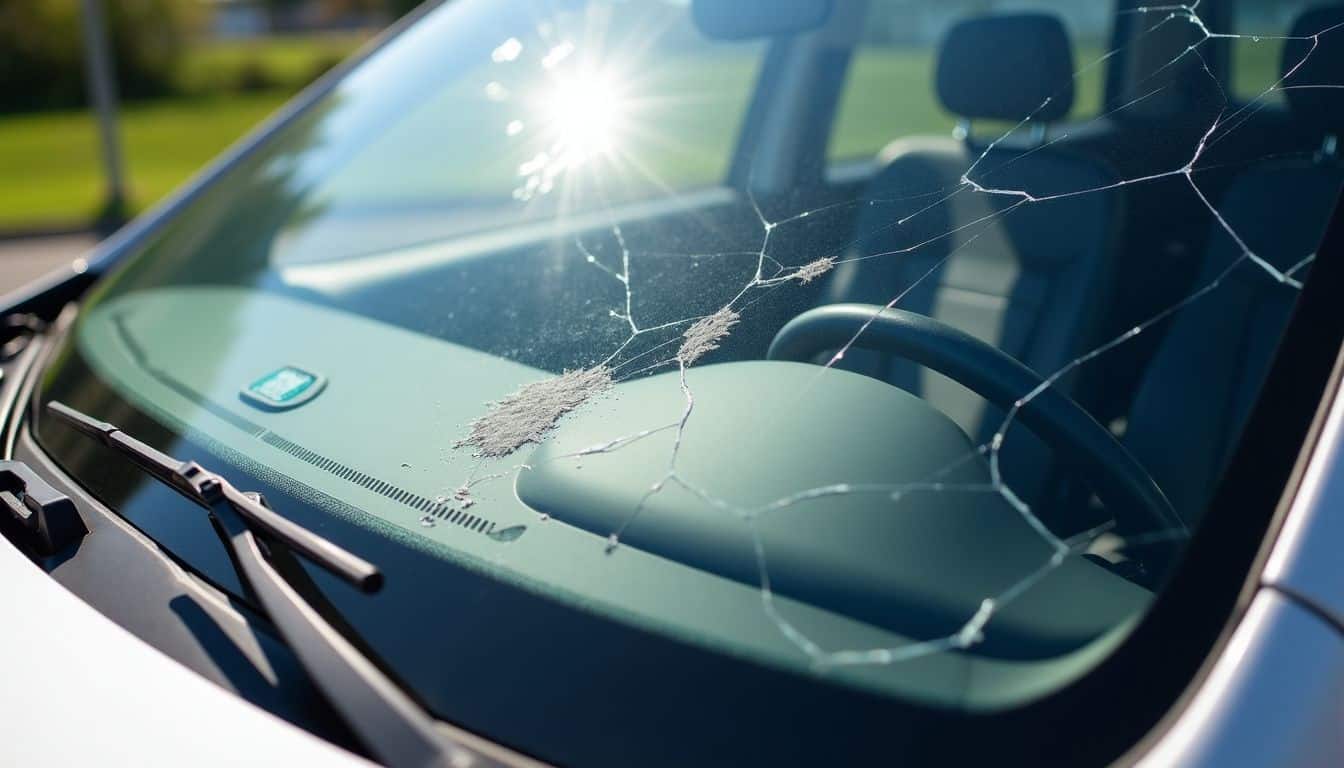
Your windshield faces daily threats from temperature swings and road bumps that can turn small cracks into major safety risks – read on to learn what makes these problems worse and how to protect your car’s vital safety barrier.
Extreme Temperatures
Temperature changes pose serious risks to damaged windshields. Hot summer days make glass expand, forcing small chips to spread into larger cracks. The stress doubles when you blast your car’s AC, creating a harsh temperature difference between the inside and outside of your windshield.
Cold weather brings its own set of problems for auto safety. Glass contracts in freezing temperatures, making existing damage worse. Cracks grow 60% faster at 32°F, and the risk jumps even higher at 0°F.
These temperature swings affect your windshield’s strength and could impact proper airbag deployment during an accident. A small chip might seem harmless now, but extreme weather can turn it into a major safety issue overnight.
Vibrations from Driving

Constant driving creates strong vibrations that travel through your car’s frame straight to the windshield. These shakes and bumps put extra stress on any existing cracks or chips.
Your daily commute on rough roads makes tiny cracks grow faster than you might expect. Driving over potholes, speed bumps, or uneven pavement sends shock waves that worsen windshield damage.
Road conditions play a huge role in crack growth. Bumpy highways and construction zones create more intense vibrations that speed up crack spreading. Small chips can turn into long cracks within days of regular driving.
The windshield chip near your airbags faces extra risk from these constant vibrations. Fast action helps prevent minor damage from becoming a major safety problem.
People Also Ask
Can a cracked windshield affect how airbags work?
Yes, a damaged windshield can mess up how airbags deploy during a crash. The glass helps the airbags open the right way to protect you. When the glass is weak, the airbags might not work as they should.
What makes windshield cracks really dangerous?
Cracks become very risky when they block your view, spread quickly, or weaken the glass. This is extra important because the windshield helps airbags deployment work correctly in crashes.
Should I drive with a cracked windshield?
It’s not safe to drive with a cracked windshield. The crack can get bigger suddenly, and this could affect how your airbags work in an accident. Better fix it right away.
How soon should I fix my cracked windshield?
Fix your windshield as soon as you spot any damage. Don’t wait – even small cracks can grow fast and mess up your airbags deployment. Most shops can fix it in about an hour.
References
https://delawareautoglass.com/blog/2021/08/28/a-complete-guide-to-the-different-types-of-windshield-cracks/ (2021-08-28)
https://www.threeriversautoglass.com/blog/what-are-the-most-common-types-of-windshield-cracks/
https://5starautoglass.ca/blog/the-potential-dangers-of-ignoring-a-cracked-windshield/ (2024-06-13)
https://fusionwindshield.com/2024/03/25/why-you-shouldnt-ignore-a-cracked-windshield/
https://www.nuvisionautoglass.com/guide/the-hidden-dangers-of-cracked-windshield/
https://www.glassfixitauto.com/blog/how-weather-conditions-can-worsen-cracks-on-windshield/
https://autoglassoutlet.com/can-heat-crack-a-windshield-understanding-the-risks/
